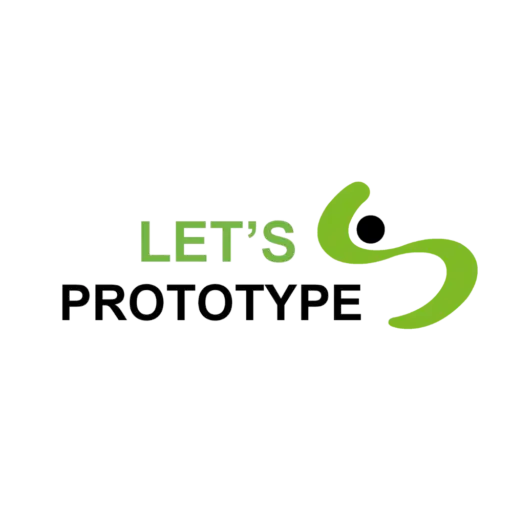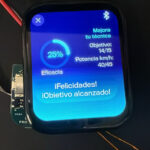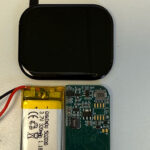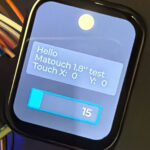AMOLED Screens: Definition and Use in Prototype Development
What are AMOLED screens?
Explained in non-technical terms, AMOLED screens use a technology that controls individual light-emitting points independently, instead of using backlight layers to manage screen illumination, in order to display lines and images.
To draw an analogy, LCD screens rely on a continuous light source underneath, with layers of backlighting and light control placed on top to visually form the images.
In contrast, AMOLED screens display images using the same light-emitting layer, controlling each tiny point individually, which results in better contrast without increasing the overall screen thickness.
Dimensions and Geometries of AMOLED Screens
The dimensions and geometries of AMOLED screens are more compact compared to other screen technologies on the market, precisely because of their ability to control lighting directly on the same surface.
Although we’re talking about millimeter differences, their integration into wearable devices can significantly impact the overall aesthetics and thickness of the prototypes.
Specifically, LCD screens have a thickness ranging from 1.5 mm to 2.00 mm, while AMOLED screens typically measure between 0.6 mm and 1.00 mm.
Battery Life. AMOLED Power Efficiency
One major advantage of using AMOLED screens is energy savings. Under normal conditions, a smart wristband prototype with an LCD touchscreen typically consumes 50–150 mW during active use, while an AMOLED screen under similar conditions usually requires only 30–100 mW.
Although it may seem like a minor difference, in types of prototypes where size reduction is critical, using, for example, a standard 300 mAh battery, an LCD screen could provide around 2.5 days of battery life, while an AMOLED screen could extend that autonomy to approximately 4 days.
Of course, these estimates are based solely on the screen’s power consumption, without considering the additional energy requirements of other components and electronic peripherals commonly found in electronic product prototypes.
Viewing Angle Visibility of AMOLED Screens
Another key differentiating factor and clear advantage of using AMOLED screens in prototypes is their wide viewing angle. In innovative smartwatches, users increasingly appreciate not having to make exaggerated wrist movements to view screen content. This user experience requirement is achieved by measuring the viewing angle capabilities of the screens.
In the case of LCD screens, which are also commonly used in these prototypes, effective viewing is achieved at angles of approximately 178º, while AMOLED screens typically offer viewing angles around 160º+.
Response Times of AMOLED Screens
Since most of these are touchscreens that are easily accessible, users expect a quick response from innovative electronic devices, making the screen technology a critical factor in shaping that experience.
For example, in the case of LCD touchscreens, the average response time ranges from 5 ms to 15 ms, whereas for AMOLED screens, the response time is typically between 1 ms and 5 ms.
This is a clear advantage, as these differences in milliseconds (ms) have a significant impact on the user experience when interacting with prototypes.
Improved Contrast in AMOLED Screens
Based on the definition of AMOLED technology—where light points are controlled directly on the same surface—we can determine that to form images and lines, the colors of these points are adjusted, and more importantly, light points are turned off to produce the color black. This operating logic enables much more defined contrast and deeper image depth.
Disadvantages of AMOLED Screens in Electronic Prototypes
As with most new technological advancements, achieving efficiency often comes at the cost of sacrificing certain features. While it’s clear that AMOLED screens offer significant advantages over other technologies in terms of image quality, energy efficiency, and response speed, their estimated lifespan is not their strongest attribute.
The main competitor to AMOLED screen technology, LCD screens, typically offer a lifespan of 50,000 to 100,000 hours of use. In contrast, AMOLED screens generally last between 30,000 and 50,000 hours.
Hardware Connectors and Control of AMOLED Screens
When dealing with higher levels of complexity in functional prototype development, it's important to consider the democratization of technology. It's true that LCD screens generally require fewer GPIO pins and, more importantly, there are numerous open-source software libraries available for their control and implementation.
Many electronic product design companies choose to work with LCD screens precisely because of the ease of access to this technology and the speed of implementation, as it is a more popular and widely understood solution.
In our case, as experts in electronic product prototyping, we have chosen to incorporate AMOLED screens, as we already work with reliable suppliers of these displays and have developed proprietary technologies for their control.
It is also very true that AMOLED screens are not the best option for every prototype. We mainly use them in devices where dimensions, user experience, and battery life are key requirements that define the product’s competitiveness in the market.
Risks to Consider When Using AMOLED in Prototypes
Based on our experience as a prototyping lab, the main risk when using AMOLED screens lies in the transition from prototype to industrial manufacturing.
Mistakes related to the choice of AMOLED screens can sometimes become a major limitation. The main AMOLED screen suppliers are based in China, and these manufacturers often develop highly specific connector types and AMOLED screen control firmware that are difficult to manage.
The main objective of these Chinese AMOLED screen manufacturers is to become captive suppliers. In other words, once you decide to include their AMOLED screens in an electronic prototype, it becomes very difficult to switch to a different AMOLED screen supplier in the future mass manufacturing process of the prototype.
At Let’s Prototype, we have successfully mitigated the risks associated with captive suppliers. Through partnerships with manufacturers whose technologies are highly open, we are able to work with AMOLED screens, connectors, and firmware that are democratized, allowing us to switch suppliers at any stage of the new product development process.
Examples of Products That Use AMOLED Screens
Biomedical Prototypes with AMOLED Screens
In biomedical prototypes, designed to continuously and wirelessly monitor specific health patterns in male intimate areas, the product’s autonomy, weight, and geometric constraints posed a real challenge. In this <a href="In biomedical prototypes, designed to continuously and wirelessly monitor specific health patterns in male intimate areas, the product’s autonomy, weight, and geometric constraints posed a real challenge. In this prototype example, every extra minute of battery life was crucial — if the device failed to meet minimum operational timeframes, it would be unable to collect relevant data for diagnosing sexual dysfunctions. Therefore, we chose to incorporate AMOLED screens primarily for their energy-saving benefits rather than for their display quality." target="_self">prototype example, every extra minute of battery life was crucial — if the device failed to meet minimum operational timeframes, it would be unable to collect relevant data for diagnosing sexual dysfunctions. Therefore, we chose to incorporate AMOLED screens primarily for their energy-saving benefits rather than for their display quality.
Smart Wristbands for Padel with AMOLED Screens
The smart wristband for padel is a wearable device that continuously runs a machine learning model to identify different movements or types of shots commonly performed by athletes.
Size constraints were critical requirements, as exceeding the client’s defined parameters would compromise the device’s usability due to ergonomic needs. Additionally, the high processing power required to keep the controller running demanded increased autonomy from the other peripherals used in the prototype. The use of an AMOLED screen in this functional prototype example resulted in a 40% energy savings compared to the first prototype, in which we used commercial LCD screens.
In general, AMOLED screens offer clear advantages over other commercial display technologies. AMOLED screens are commonly used in products that require high image quality, the display of text in very small spaces, and maximum battery life—particularly in devices where the battery takes up more than 50% of the available space for electronics. On the other hand, in prototypes where these features are not critical to the product’s success, alternative screen types may be used, which are often more durable and, in some cases, more robust.



